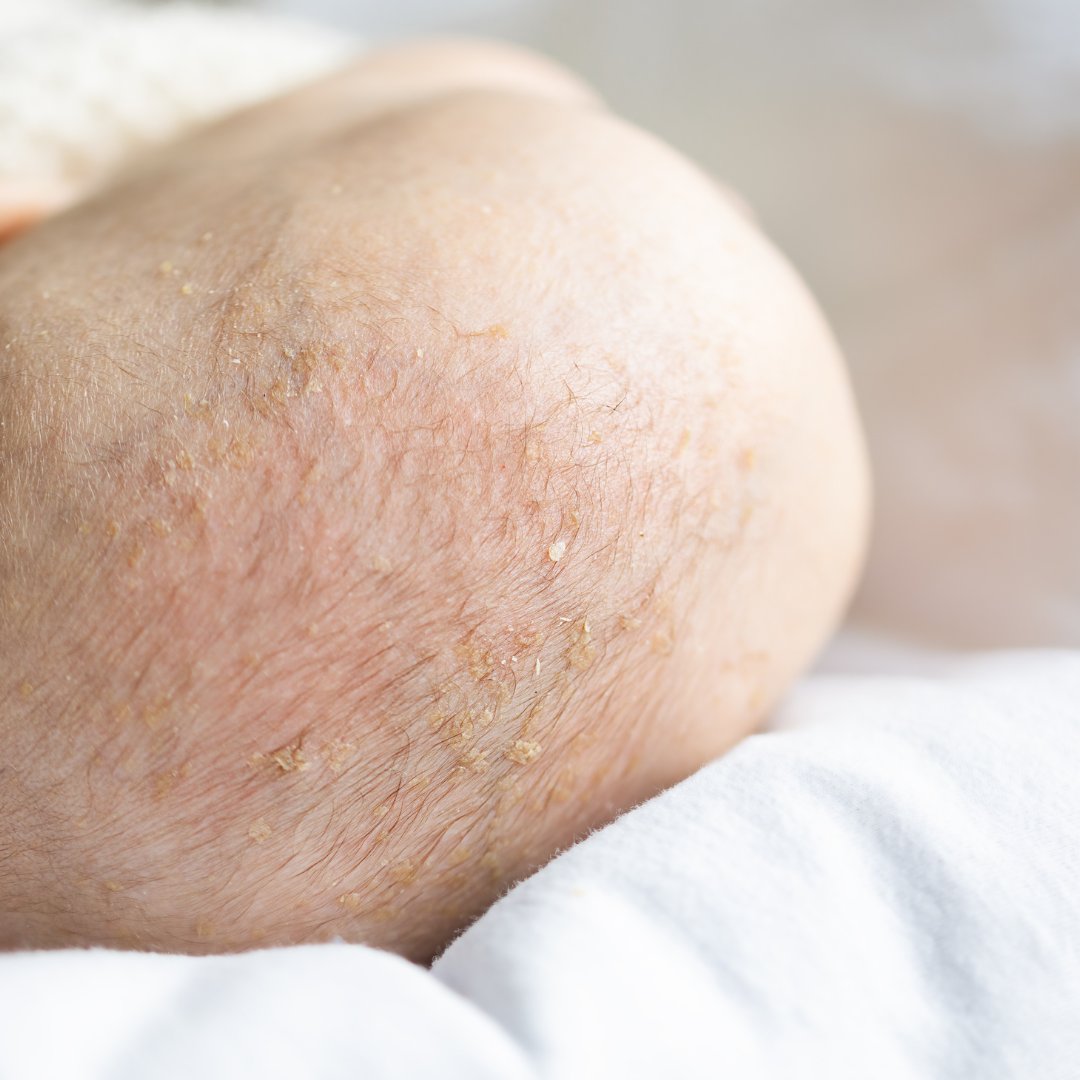Cradle cap appears as rough, yellowish or brownish patches on a baby's scalp. Sometimes it can also appear on the face, ears, neck, or skin folds. It looks like dandruff but can be thicker and greasier.
Everything you need to know about baby cradle cap
Cradle cap, also known as infant seborrheic dermatitis, is a common condition in babies. While it may seem alarming, it is usually harmless and temporary. In this article, we will explore what cradle cap is, what causes it, how long it lasts, and how to treat it.
What is cradle cap? How to recognize them?
Cradle cap appears as rough, yellowish or brownish patches on a baby's scalp. Sometimes it can also appear on the face, ears, neck, or skin folds. It looks like dandruff but can be thicker and greasier.
What causes cradle cap?
Cradle cap comes from an excessive secretion of sebum in the baby, due to the sebaceous glands, responsible for the production of the lipid film on the infant's skin to protect it. This excess, therefore, forms small oily areas, generally on the baby's scalp, which stick the dead cells together, thus creating "crusts".
But then, where does the activation of the sebaceous glands come from? Well, it comes from pregnancy hormones! Indeed, a small proportion of your hormones are still present in your baby's body. But, rest assured, once these have disappeared, the cradle cap will follow the same path.
Also, cradle cap can come from a yeast called Malassezia Furfur, which is naturally present on our skin, but which proliferates more on babies' skin, because of their excess sebum, thus promoting the appearance of cradle cap .
When does cradle cap appear?
Cradle cap can appear as early as the first few weeks of a baby's life. It usually lasts a few months, but usually disappears after the baby is six months old.
How to treat cradle cap?
Although cradle cap will eventually go away on its own, there are some treatments that can help manage it and get rid of it faster. Here are some simple and effective methods:- Regular washing : Wash your baby's scalp with a mild, pH-neutral, soap-free cleansing gel. This will help reduce the build-up of sebum and dead skin cells. Be sure to gently massage the scalp while washing.
-
Gentle brushing : Use our dream baby brush after shampooing. This will help remove the scales of cradle cap. Use gentle strokes to avoid irritating the skin.
-
100% Natural Oils : Apply natural oil to your baby's scalp before bathing, which can help soften the scabs. Leave the oil on for about 15 minutes, then wash and brush gently.
-
Specific creams : If cradle cap persists, your pediatrician may recommend a medicated cream or lotion specially formulated to treat seborrheic dermatitis.
When to see a doctor?
Although cradle cap is usually benign, it is recommended to consult a pediatrician if:
- The scabs spread to other parts of the body significantly.
- Your baby's skin appears irritated, red or inflamed.
- The scabs do not respond to basic treatments or seem to get worse.
- Your baby is showing signs of discomfort or pain.
Conclusion :
Cradle cap can be a normal and temporary occurrence in babies, often without any major cause for concern. With proper care and a little patience, it will disappear on its own. However, if you have any doubts or concerns, do not hesitate to consult your pediatrician for advice and appropriate treatment. In the meantime, continue to provide your baby with gentle and loving care to ensure his comfort and well-being.





